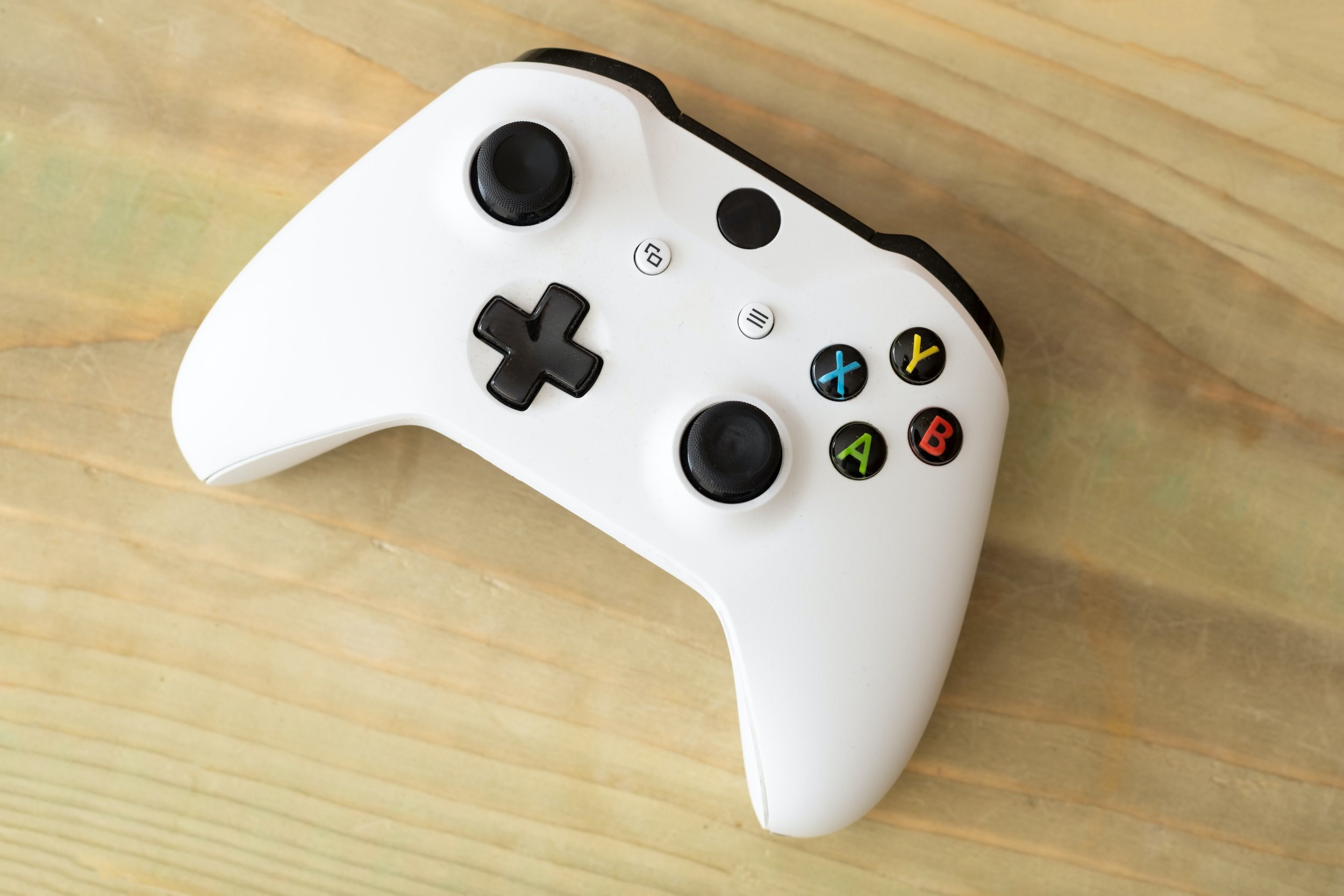
Gamer Examples
These are a collection of real-life stories of four different gamers with different abilities and goals related to gaming. They each have a different controller setup and their stories are meant as simple examples of how adaptive controllers can be used in different situations depending on the gamer’s needs.

Gamer One
Story
Gamer 1 has Duchene’s Muscular Dystrophy. They are an avid gamer and have been gaming their entire life and game on their Xbox. However, recently, they have noticed that their hands have become weaker leading to difficulty accessing some controls and quicker fatigue while gaming. They are no longer able to push down either thumb stick and are slower to access the triggers on the controller. They can only game for a short period of time before they need a break due to fatigue.
Solution
This gamer was set up with Evil Controller’s Lightweight Controller for Xbox. This controller has decreased weight and the buttons were made to require less force to activate. In addition, remappable buttons were added to the back of the controller, which allowed them to remap the thumb stick buttons and triggers to the buttons on the back of the controller. This controller reduced their fatigue while playing and allowed them to access all the controls they needed to play games.

Gamer Two
Story
Gamer 2 had a stroke which caused limited strength in their right hand. They love playing sports games on Xbox, such as Madden, but are now only able to access the left side of the controller. All the games they want to play only require a single joystick and they don’t typically need the right joystick to play. However, they need to be able to access the buttons on the right side of the controller. They have enough strength in their right had to access adaptive switches, but not enough fine motor control to access the small buttons on the controller.
Solution
Since the user was able to access the standard controller with their left hand and adaptive switches with their right, they were set up with a standard controller and Xbox Adaptive Controller on copilot mode. Adaptive switches were plugged into the Xbox Adaptive Controller which they could access with their right hand to make up for the controls they couldn’t access on the controller. In addition, buttons were remapped on the standard controller, so some of the controls on the right side of the controller could be accessed using the D-Pad. Using this set up, they were able to access all the buttons on the controller they needed to play their games.

Gamer Three
Story
Gamer 3 had a high-level spinal cord injury and can no longer access a standard controller at all. They gamed a lot prior to their injury and want to get back to playing all the complex games that they played in the past. They are very motivated, and it has only been six months since they have last played video games. However, they are adamant that they want to play all the games they previously played on their PlayStation console, including complex games such as Red Dead Redemption and Marvel’s Spiderman.
Solution
This gamer was set up with the Quadstick FPS controller, which is the only controller that would allow them to play the difficult games that they want to play. They were extremely motivated, which helped with being able to start with more difficult games. However, starting with Red Dead Redemption or Marvel’s Spiderman is still too difficult when trying to get used to an adaptive controller like the Quadstick. Therefore, this gamer was set up on easier first-person shooter games, which were gradually increased in difficulty before they transitioned more difficult games. They started with Battlefront 2 on arcade mode on the lowest difficulty level. In addition, they played Call of Duty: Zombies, which starts at a slow pace and gradually increases in difficulty as the player gets further in the game. This allowed them to get used to the controls on the Quadstick before transitioning to more difficult gameplay. Now they are able to play all first-person shooter games on their PlayStation 5 console.

Gamer Four
Story
Gamer 4 has Duchene’s Muscular Dystrophy. They are on a vent and are not able to access a standard gaming controller at all. They have not gamed in over three years. They have enough movement in their thumbs to access lightweight adaptive switches. They have some respiratory strength but do not have a lot of lateral head movement. Therefore, they cannot access all the sip-and-puff holes on the Quadstick. They don’t have a strong preference for which games they want to play but want to get back to any games possible on their PlayStation 4.
Solution
This gamer was set up with the Quadstick FPS controller. The force required to activate the sip-and-puff holes on the Quadstick was decreased to the lowest value as they could not access them using the standard Quadstick settings. They could also not access all the sip-and-puffs on the Quadstick, so it did not provide them with enough controls to play games. Therefore, two microlight switches were plugged into the back of the Quadstick and put under each of their thumbs, which provided them with two extra controls to play. To get used to this new set up, they started with Forza 5, since racing games are easier to play using adaptive controllers. They have now started to play more complex first-person shooter games such as Borderlands, which is a good introductory first-person shooter game.





